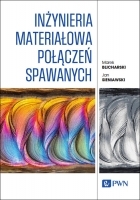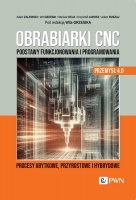Modernisation of the drop forging process on the example of forming a bracket forging
Modernizacja procesu kucia matrycowego na przykładzie kształtowania odkuwki wspornika *
Mechanik nr 03/2024 - Obróbka plastyczna
ABSTRACT: This paper presents an example of the manufacturing of bracket forgings formed in a dual system. Cross-wedge rolling (CWR) was proposed as the forming method for the preform. The correctness of the adopted solution was verified in numerical simulations, which were performed using the commercial software Forge®. It was shown in detail how the shape of the workpiece changes in the individual operations of the forming process. Maps of temperature, effective strain, strain rate in the preform as well as distributions of force parameters in the rolling process are presented.
KEYWORDS: drop forging, cross-wedge rolling, preform, FEM
STRESZCZENIE: W artykule przedstawiono przykład wykonywania odkuwek wspornika kształtowanych w układzie podwójnym. Jako metodę wytwarzania przedkuwki zaproponowano walcowanie poprzeczno-klinowe (WPK). Poprawność przyjętego rozwiązania zweryfikowano w symulacjach numerycznych, które wykonano w komercyjnym programie Forge®. Szczegółowo pokazano, jak zmienia się kształt przedmiotu obrabianego w poszczególnych operacjach procesu kształtowania. Przedstawiono mapy temperatury, intensywności odkształcenia, prędkości odkształcenia w przedkuwce oraz rozkłady parametrów siłowych w procesie walcowania.
SŁOWA KLUCZOWE: kucie matrycowe, walcowanie poprzeczno-klinowe, przedkuwka, MES
BIBLIOGRAFIA / BIBLIOGRAPHY:
[1]Wasiunyk P. „Kucie matrycowe”. Warszawa: Wyd. Naukowo-Techniczne (1987).
[2]Pater Z. “Cross-Wedge Rolling”. In: “ComprehensiveMaterials Processing”. S.T. Button Ed. Elsevier Ltd.3 (2014): 211–279.
[3]Pater Z. “Development of cross-wedge rolling theoryand technology”. Steel Res. Int. 81, 9 (2010): 25–32.
[4]Pater Z. „Walcowanie poprzeczno-klinowe”. Lublin:Wyd. Politechniki Lubelskiej (2009).
[5]Kache H., Stonis M., Behrens B.A. “Development ofa warm cross wedge rolling process using FEA anddownsized experimental trials”. Prod. Eng. Res. Devel.6 (2012): 339–348, https://doi.org/10.1007/s11740-012-0379-5.
[6]Meyer M., Stonis M., Behrens B.A. “Cross wedge rollingand bi-directional forging of preforms for crankshafts”. Prod. Eng. Res. Devel. 9 (2015): 61–71, https://doi.org/10.1007/s11740-014-0581-8.
[7]Behrens B.A., Stonis M., Rasche N. “Influence of theforming angle in cross wedge rolling on the multi-directional forging of crankshafts”. Int. J. Mater. Form.11 (2018): 31–41, https://doi.org/10.1007/s12289-016-1326-3.
[8]Pater Z. “Multi-wedge cross rolling of balls”. J. IronSteel Res. Int. 20, 10 (2013): 46–50, https://doi.org/10.1016/S1006-706X(13)60175-2.
[9]Pater Z., Tomczak J., Bulzak T., Bartnicki J., Tofil A.“Prediction of crack formation for cross wedge rollingof harrow tooth preform”. Materials. 12, 14 (2019)e2287, https://doi.org/10.3390/ma12142287.
[10]Kruse J., Jagodzinski A., Langer J., Stonis M., BehrensB.A. “Investigation of the joining zone displacementof cross-wedge rolled serially arranged hybrid parts.Int. J. Mater. Form. 13 (2020): 577–589, https://doi.org/10.1007/s12289-019-01494-3.
[11]Bulzak T. “Ductile Fracture Prediction in Cross-WedgeRolling of Rail Axles”. Materials. 14, 21 (2021): e6638,https://doi.org/10.3390/ma14216638.
[12]Tomczak J., Pater Z., Bulzak T. “Thermo-mechanicalanalysis of a lever preform forming from magnesiumalloy AZ31”. Arch. Metall. Mater. 57, 4 (2012): 1211–1218, https://doi.org/10.2478/v10172-012-0135-z.
[13]Pater Z., Gontarz A., Tomczak J., Bulzak T., Wójcik Ł. “Determination of the Critical Value of Material Damage ina Cross Wedge Rolling Test”. Materials. 14, 7 (2021):e1586, https://doi.org/10.3390/ma14071586.
DOI: https://doi.org/10.17814/mechanik.2024.3.3
* Artykuł recenzowany




















